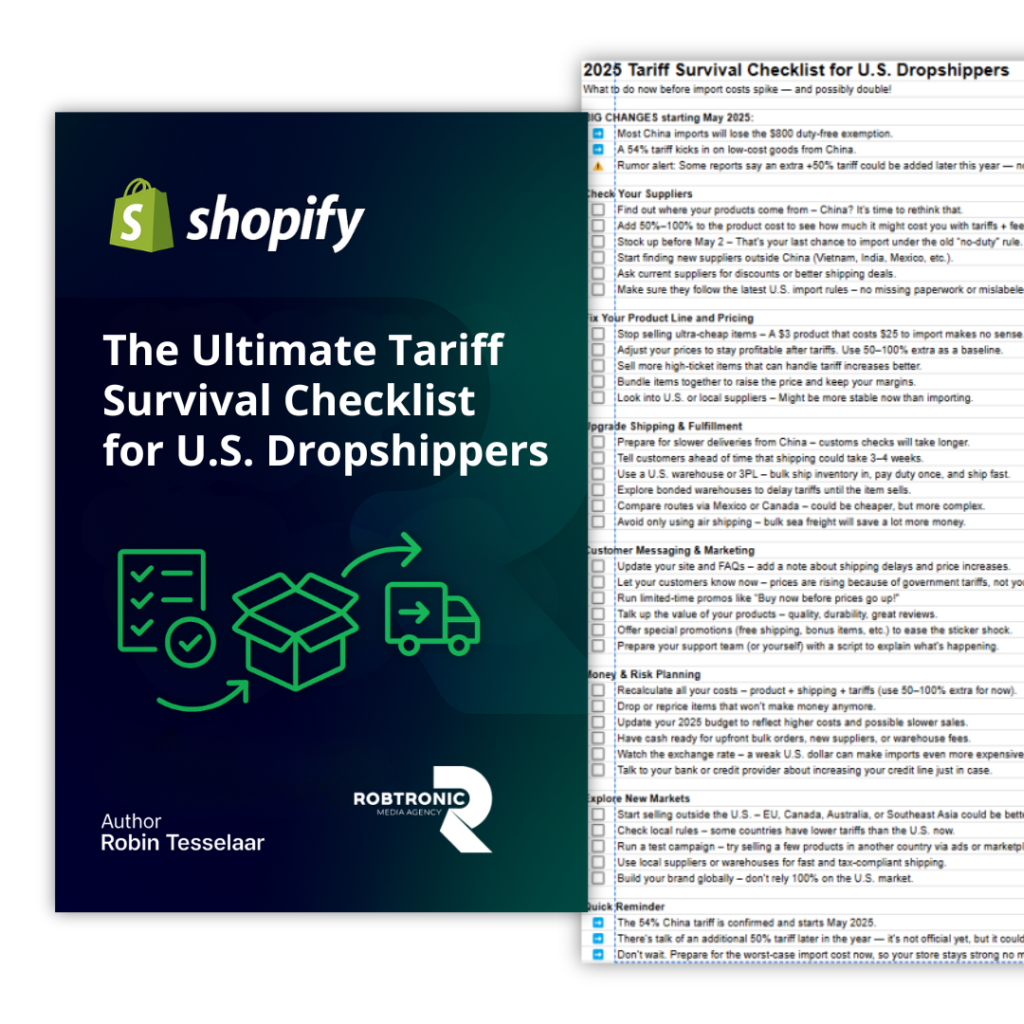In a move that’s rattling the dropshipping and e-commerce world, former President Donald Trump has introduced massive new tariffs, with a whopping 54% targeting Chinese imports. These new rules don’t just make things more expensive—they change the entire game for anyone selling products online in the U.S.
This article breaks down how these changes affect dropshipping in 2025, why sellers should care, and what smart strategies can help businesses survive—and even thrive.
1.1 What Trump’s 54% Tariff Means for Dropshipping in 2025
Tariffs are like surprise taxes added to imported products. In 2025, a major tariff hike has hit Chinese goods—jumping to 54%, up from 20%. This is a direct hit to dropshippers who rely on low-cost Chinese products to make a profit.
What does this mean? If an item used to cost $10, it may now cost over $15 due to tariffs alone. This increase hurts profit margins, especially for small businesses selling low-ticket items.
📊 E-commerce tariffs impact: According to Reuters, this change is part of Trump’s plan to bring manufacturing back to the U.S., but it’s putting pressure on international sellers.
1.2 Say Goodbye to Duty-Free: The End of the De Minimis Rule
For years, the de minimis rule allowed items under $800 to enter the U.S. duty-free. That rule is now canceled, meaning every single shipment from countries like China will face import duties—no matter the value.
This rule change doesn’t just affect pricing—it also increases paperwork, customs delays, and buyer frustration.
💡 De minimis rule changes: Sellers should calculate the total cost of every shipment and communicate delays and taxes clearly to customers to avoid disputes.
1.3 Low Consumer Confidence? Here’s How to Still Make Sales
In 2025, consumer confidence in the U.S. is at a 12-year low, according to YCharts. People are spending less, especially on non-essential items. This is a big deal for online sellers of fun or trendy products.
To adapt, businesses should focus on solution-based products—things that solve real problems or offer daily value. Wellness items, home repair gadgets, and education tools are just a few examples.
🗣️ As retail strategist Jenna O’Connell puts it: “Shoppers are holding back. They need a reason to buy.”
1.4 Dollar Dropping? How to Handle Currency Hits in E-commerce
Another challenge in 2025 is the decline of the U.S. dollar. The Dollar Index (DXY) has dropped 8% this year, reducing American buying power and increasing costs for U.S.-based sellers.
Many e-commerce businesses are now switching to stronger currencies like the Euro when paying international suppliers. This move can help stabilize product costs.
💡 Currency exchange impact on imports: Sellers should talk to suppliers about accepting payments in other currencies and monitor exchange rates closely.What Trump’s 54% Tariff Means for Dropshipping in 2025

